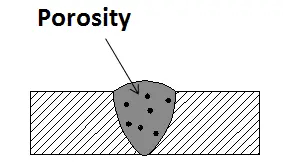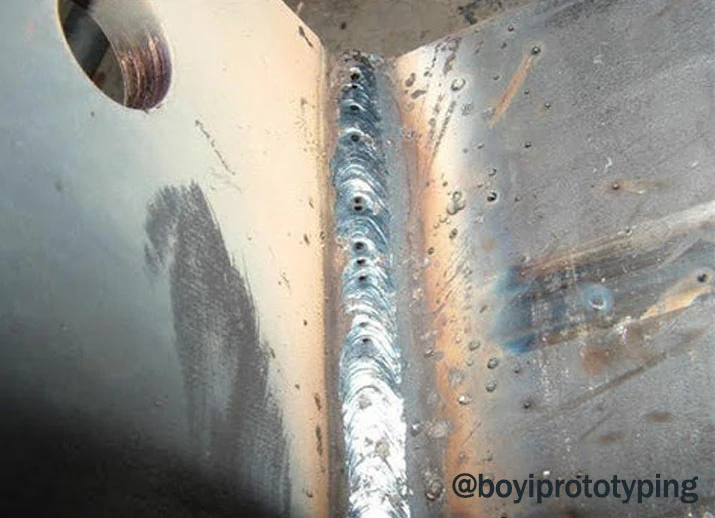Comprehending Porosity in Welding: Discovering Reasons, Effects, and Prevention Techniques
Porosity in welding is a persistent challenge that can considerably impact the high quality and stability of welds. As specialists in the welding sector are well conscious, understanding the reasons, effects, and avoidance strategies associated with porosity is essential for accomplishing robust and trusted welds. By diving right into the root causes of porosity, examining its harmful effects on weld quality, and checking out efficient prevention strategies, welders can boost their knowledge and abilities to generate top quality welds continually. The complex interplay of factors adding to porosity needs a thorough understanding and an aggressive technique to guarantee successful welding outcomes.
Common Reasons of Porosity
Porosity in welding is mainly brought on by a mix of factors such as contamination, incorrect shielding, and poor gas insurance coverage throughout the welding process. Contamination, in the form of dirt, oil, or corrosion on the welding surface area, produces gas pockets when heated, resulting in porosity in the weld. Improper shielding takes place when the shielding gas, commonly used in processes like MIG and TIG welding, is unable to completely protect the liquified weld pool from reacting with the surrounding air, leading to gas entrapment and succeeding porosity. Additionally, inadequate gas insurance coverage, often as a result of wrong circulation prices or nozzle positioning, can leave parts of the weld vulnerable, permitting porosity to develop. These factors collectively contribute to the formation of voids within the weld, deteriorating its honesty and potentially triggering structural issues. Recognizing and addressing these common reasons are crucial action in preventing porosity and guaranteeing the top quality and toughness of welded joints.
Impacts on Weld High Quality
The visibility of porosity in a weld can substantially compromise the general top quality and integrity of the bonded joint. Porosity within a weld develops spaces or tooth cavities that compromise the framework, making it extra prone to fracturing, corrosion, and mechanical failure.
Additionally, porosity can impede the efficiency of non-destructive testing (NDT) techniques, making it testing to identify various other issues or suspensions within the weld. This can lead to considerable safety and security issues, particularly in important applications where the structural integrity of the welded parts is paramount.

Avoidance Techniques Summary
Offered the detrimental effect of porosity on weld high quality, efficient avoidance methods are critical to maintaining the structural integrity of bonded joints. One of the primary prevention strategies is complete cleansing of the base products before welding. Pollutants such as oil, oil, corrosion, and wetness can add to porosity, so ensuring a tidy work surface area is important. Appropriate storage space of welding consumables in dry problems is also critical to avoid dampness absorption, which can lead to gas entrapment throughout welding. Additionally, picking the suitable welding specifications, such as voltage, current, and take a trip speed, can assist decrease the risk moved here of porosity development. Making certain adequate securing gas circulation and protection is another crucial prevention navigate to this website strategy, as not enough gas insurance coverage can lead to atmospheric contamination and porosity. Finally, proper welder training and certification are essential for applying precautionary steps successfully and regularly. By integrating these prevention techniques right into welding methods, the event of porosity can be dramatically decreased, bring about more powerful and much more trusted welded joints.
Significance of Correct Protecting
Appropriate securing in welding plays a crucial role in preventing climatic contamination and making sure the honesty of bonded joints. Shielding gases, such as argon, helium, or a mixture of both, are generally used to safeguard the weld swimming pool from responding with elements in the air like oxygen and nitrogen. When these responsive aspects enter into contact with the hot weld swimming pool, they can create porosity, causing weak welds with minimized mechanical homes.

Inadequate protecting can result in numerous problems like porosity, spatter, and oxidation, jeopardizing the structural integrity of the welded joint. As a result, adhering to correct securing techniques is important to produce top quality welds with very little problems and guarantee the durability and reliability of the bonded elements (What is Porosity).
Tracking and Control Methods
Just how can welders properly check and control the welding procedure to guarantee optimum outcomes and avoid defects like porosity? One key technique is with using innovative surveillance technologies. These can consist of real-time surveillance systems that provide feedback browse around these guys on specifications such as voltage, current, travel speed, and gas flow prices. By continuously checking these variables, welders can recognize variances from the ideal problems and make prompt modifications to stop porosity development.

In addition, implementing appropriate training programs for welders is necessary for checking and regulating the welding process properly. What is Porosity. Educating welders on the value of preserving constant criteria, such as proper gas securing and take a trip speed, can aid prevent porosity issues. Routine evaluations and certifications can likewise make certain that welders are proficient in tracking and regulating welding processes
Moreover, using automated welding systems can improve tracking and control capacities. These systems can exactly regulate welding criteria, decreasing the likelihood of human mistake and making certain consistent weld quality. By incorporating sophisticated monitoring innovations, training programs, and automated systems, welders can successfully check and regulate the welding procedure to reduce porosity defects and accomplish top notch welds.
Final Thought

Comments on “What is Porosity in Welding: Vital Tips for Getting Flawless Welds”